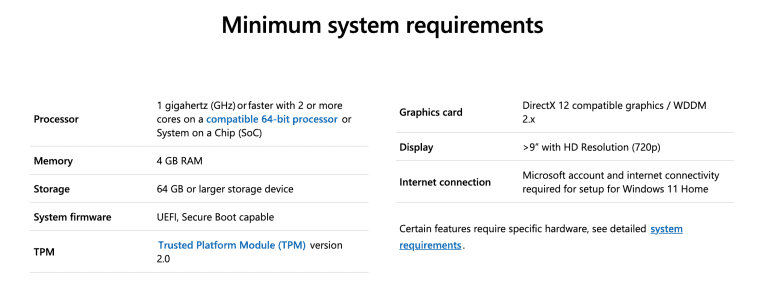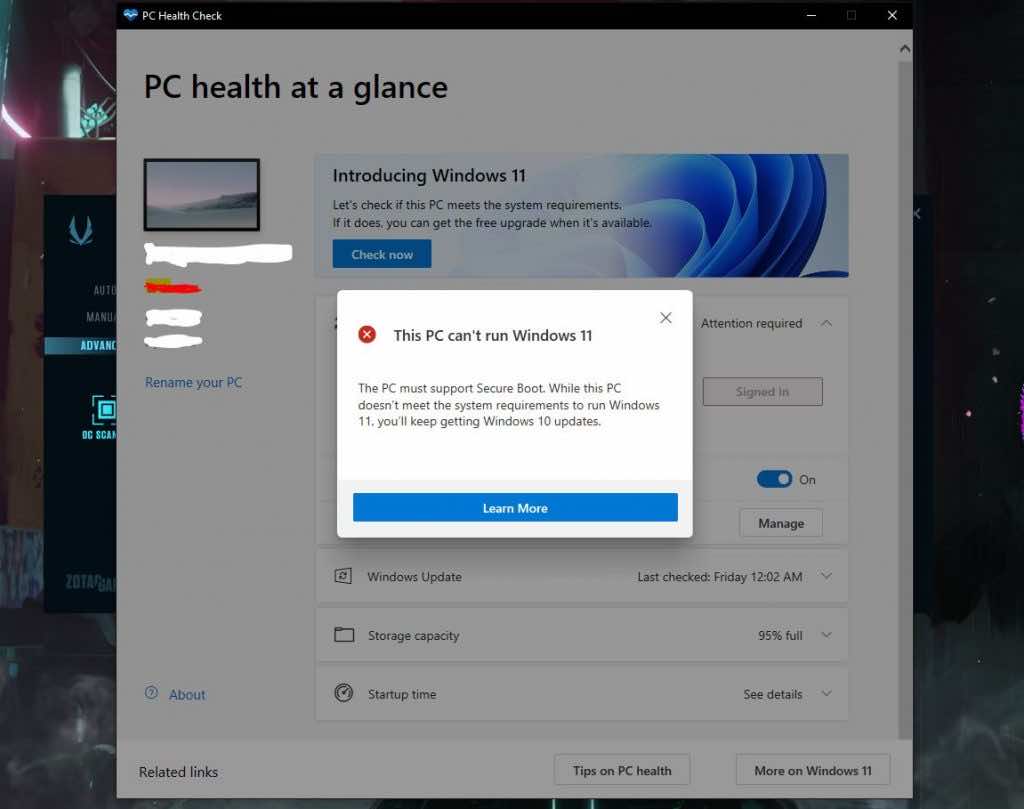Well there you have it, as expected from so many leaks, Microsoft has officially announced the next version of Windows. Windows 11 was officially introduced by Microsoft yesterday and as expected it will be a free upgrade for Windows 10 PCs. Well, as long as your hardware meets the system requirements. No more Sun Valley or Moon Valley, we’re in the end game now.
It seems that the upcoming Windows 11 will require more horsepower than the previous Windows 10. It will require a PC with at least a 1GHz processor but with a 2 core chip on a 64-bit compatible processor. Windows 11 requires at least 4GB of RAM and 64GB of PC storage. The previous version required 1GB of RAM and 32GB of storage. The graphics card requirement is also going up. We now need a DirectX 12 compatible GPU or CPU coupled with a display resolution of at least 720p.

These requirements seem normal enough, however, the weirdest requirement is the need for a TPM chip. TPM stands for Trusted Platform Module 2.0 which is basically a security chip designed to store login information. If you don’t have one of these then you won’t be able to run Windows 11. Not every PC has the chip, so you’ll need a motherboard upgrade if you don’t have it.
If you want to find out if you’re golden then we have you covered. You can download Microsoft’s PC Health Check app. I ran the app on my Ryzen 5 2600x PC and it said that my machine wasn’t compatible. It even said that my PC must support secure boot so I haven’t even gotten around to check if I have the chip or not. However, if you initially aren’t eligible, don’t worry.

Just go to the bios settings and check if you can activate the TPM chip. Now, this may be hard for an average joe but you’ll need to do it if you want that new OS. In most cases, turning on TPM required going into the BIOS settings and activating the ftpm setting. Might be different depending on the motherboard manufacturer.
Microsoft hasn’t revealed why they added the TPM requirement. According to their blog post “Since launching Windows 10 six years ago, a lot of hardware innovation has happened in the PC space. For Windows to move forward and take better advantage of the latest innovations, we need to update the baseline system requirements for modern PCs”.


